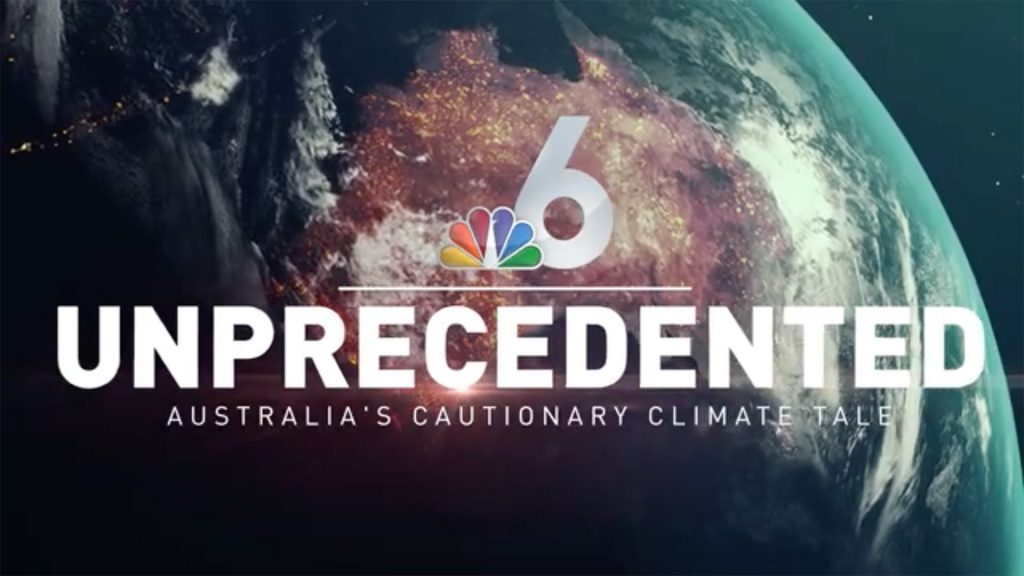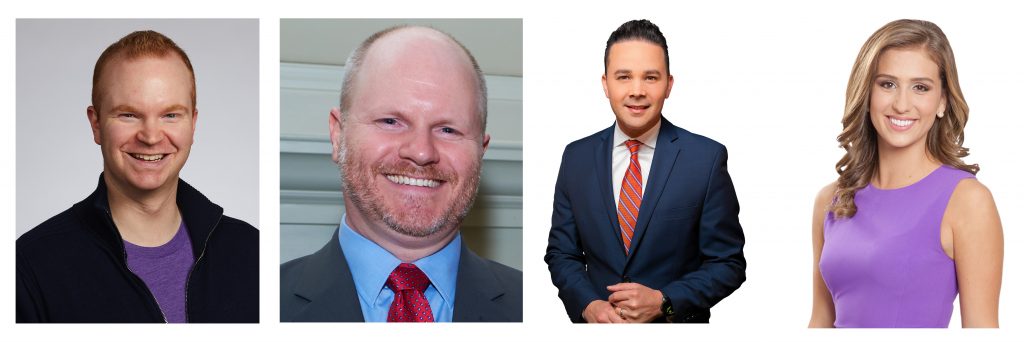
EDITOR’S NOTE: This is the first story in Changing Weather, our new, occasional series on innovations in local weather coverage.
The current temperatures. The satellite map. The 10-day forecast. They’re all sturdy staples of the weather report on your local station. But nowadays, they’re not enough to compete with the convenient phone apps in every viewer’s pocket.
“So treating weather as news is really important as we move forward,” says Mike Rawlins, executive director of weather at WNBC in New York. “It’s not about pulling up to the graphics computer right before showtime. It’s not just a little block of information we do halfway through the show. It’s news, and there really does need to be a story.”
Nate Johnson, director of weather operations for the NBCUniversal Owned Television Stations, agrees that meteorologists “have an obligation” to give viewers something more than an app can provide. And he says many have responded by breaking down walls between weather and news, and using journalistic storytelling to deepen their coverage.
“Some of the most interesting weathercasts I’ve seen have been where somebody’s done some sort of ‘big-j’ journalism and revealed a layer to something that wasn’t immediately evident,” he says. “It’s getting into how the weather works, why it’s doing what we say it’s going to do, why it didn’t do what we thought it would do yesterday — and telling that in a cohesive story. And that is a challenge that we’re putting to our meteorologists.”
Two meteorologists trying to meet that challenge are Carlos Robles and Angie Lassman, who are among the group’s leaders in innovation.

Bringing weather stories to life with augmented reality
“I wanted to be a journalist first — just a journalist,” says Robles, chief meteorologist at Telemundo’s KTMD in Houston. But one day, when he was still working as a producer at Univision’s WLII in Puerto Rico, a meteorologist noticed his attention to hurricane stories and encouraged him to consider a career in weather.
“She told me, ‘You can combine journalism and meteorology, and you can be successful,’” he says. “And I did it. I love weather, I love journalism, and when I’m looking back, I say, ‘That was a really good decision.’”
Robles went back to school to add a master’s degree in meteorology to his bachelor’s in journalism, and now he puts them both to use creating unique forecasts and explainers through augmented reality (AR).
His station invested in the technology, with graphics support from the group. Robles says working with the engaging three-dimensional graphics can illustrate scientific concepts in a way that viewers just can’t get on an app. He also says AR can work whether you’re covering the effects of a short dry spell on local gardens — or the potential for dangerous flooding to sweep away cars.
“You can take 3D models — the globe, cars, a garden, whatever you want — and it’s a perfect way to show the people how our atmosphere works in real time,” he says. “Last year, with Tropical Storm Imelda, I showed people why we will receive more than 20 inches of rain in just one day. People started to send me notes on Facebook and Instagram: ‘Hey, Carlos, thanks for explaining what will happen. We understand this and we can prepare.’”
Watch Carlos Robles in “El Golfo en Alerta,” a special on severe storms produced by his station’s meteorology team
He says his goal with AR is to hook viewers with a memorable scene to illustrate the news they need: “Augmented reality captures the attention of your audience — and it doesn’t allow them to go to other places for weather information because you explain the situation in a better way.”
“So you need to present a really good story,” he says. “It’s something that’s just growing and growing every year, more and more.”
Using meteorology expertise to cover climate change
“I might be a meteorologist, but I’m also a journalist,” says Lassman of Miami’s WTVJ (which brands itself as NBC 6 South Florida). “Where I live is ground zero for climate change in the United States, and there are tons of stories where we can focus on environmental issues and make that a brand of NBC 6.”
Lassman says her training in atmospheric science gives her an edge in in-depth climate coverage. “A lot of times, those two aspects aren’t married — the science and the human communication. But if you can be a good communicator about complicated things, I think there’s a ton of opportunity.”
She found one opportunity that stretched the definition of “local” all the way to Australia. Her five-part series, Unprecedented, documented the impacts of Australia’s wildfires and rising sea levels, and drew out parallels and lessons for her market back home.
“I interviewed 17 people in a matter of four days,” says Lassman. “It was incredible to be able to say, ‘Hey, look what’s going on here. Is this the canary in the coal mine for us in south Florida?’ This aired in February, and last week I was still having people write to me, saying it really resonated. We taught people something without it being too dense, and we made it relatable.”
Watch the first episode of Lassman’s Unprecedented series: “What the Climate Crisis in Australia Means to South Florida”
Going forward, Lassman expects more stations to use their meteorologists as beat reporters in correspondent-like roles, even if they’re filing stories from, say, a local river system rather than another country.
“It’s an untapped resource at this point,” she says. “We have financial correspondents, we have White House correspondents, but only in recent years have we started to see people focus on climate. It’s so timely and important, and I think it’ll be super smart for newsrooms to get on board.”
Operations director Nate Johnson says it bodes well for the future of local weather that meteorologists are embracing an “expanding role” and experimenting with new ways to tell stories beyond the basic forecast. But he acknowledges that putting this philosophy into practice can be “easier said than done.”
“Every news director I’ve ever worked for has said ‘Tell me a weather story,’” he says. “So everybody wants it, but they don’t always know what it looks like. It’s sort of like they know it when they see it.”

Maybe that’s why the best ideas bubble up from the meteorologists themselves. “Nobody told Carlos to start building AR,” says Johnson. “He just started doing it and has been a leader in our group ever since. And nobody told Angie to go to Australia. That was an idea that she had.”
“So we’re still going to show you the 10-day, and if there’s severe weather, obviously, that’s going to take over,” says Johnson. “But we’re also letting people in our stations give us ideas, and we’re giving them license to go act on those ideas. And what we’re getting back is some really cool stuff, instead of just re-racking the same set we did the last half hour.”
If you know a meteorologist who deserves to be featured in our ongoing series, please send us an email at cronkitenewslab@asu.edu.